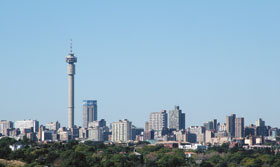

While nothing beats police on the beat to deter criminals from plying their trade, the simple reality is that manpower can only be stretched so far. Combating crime effectively therefore relies on smart solutions such as the closed circuit television (CCTV) system introduced in downtown Johannesburg in the mid 2000s.
As a result of this system, says Philip Smerkovitz, MD of CCTV firm TeleEye, crime in the areas watched by the cameras is going down, while the quality of the streets is going up. While not involved in implementing the street CCTV system, Smerkovitz’s firm observed its success with interest.
“Intuitively, people are unlikely to commit crimes when they know they are being watched. Perhaps more importantly, however, research shows the effect that CCTV has on reducing crime,” says Smerkovitz.
He points to the study ‘Evidence-based Crime Prevention: The Effectiveness of CCTV’, by Brandon C Welsh and David P Farrington. This research shows that CCTV had a significant desirable effect on crime, with an overall reduction in crime of 21% in experimental compared to comparable control areas. CCTV was most effective in reducing crime in car parks and is most effective when combined with improved street lighting and targeted at vehicle crimes.
He adds that crime includes such misdemeanours as dumping litter, graffiti and other vandalism, actions that have an adverse effect on the quality of city streets. “Thanks to safer streets, we’re seeing some revitalisation of central Johannesburg, to the extent that organised night bicycle rides are taking place in areas previously considered to be ‘no go’ for recreational cyclists.”
Metro Police spokesperson, Chief Superintendent Wayne Minnaar concurs with Smerkovitz’s view. “The whole CCTV camera project has been very successful since installation,” he confirms, adding that the Metro force is combining the cameras with visible policing to cut crime and bylaw infringements in the area. “It is a well-known fact that surveillance cameras are highly effective in spotting and combating crime, and Joburg’s cameras have been strategically placed in areas where criminals can be closely monitored.”
The effectiveness of the over 200 cameras already in operation is resulting in the city looking to increase the areas under surveillance. As reported by SAPA, Johannesburg Executive Mayor Parks Tau, speaking at Wits University earlier this month, confirmed that a further investment in the system is likely. “We are working to improve the safety of our streets and have more public lights and CCTV cameras in the city. But by far the most important safety and crime prevention intervention is for communities to join the fight against crime,” Tau is quoted as saying.
The success of CCTV in improving the safety of city streets isn’t the only place where cameras can have a positive impact, continues Smerkovitz. “Cameras can also be deployed in Metro and SAPS vehicles, providing an independent third party to deter corruption and provide crucial evidence of motorists who attempt to bribe police officers. Just like the CCTV system in the city centre acts as a deterrent, so too can cameras in vehicles play a role in reducing corruption.”
Smerkovitz adds that in-vehicle cameras have proven highly effective for police forces around the world, often providing shocking – and incontrovertible – evidence of criminal behaviour. “Certainly, the success of these systems is such that it is an obvious next step for the City of Johannesburg and other metros; discussions to implement this technology are ongoing.”
With the success that Minnaar and Tau already attribute to the city CCTV system, it does seem logical that a similar benefit might be expected if the technology is implemented more widely, including in police vehicles.
For more information contact TeleEye (South Africa), +27 (0)11 557 9200, www.teleeye.com
| Tel: | +27 11 557 9200 |
| Email: | [email protected] |
| www: | www.gothermal.co.za |
| Articles: | More information and articles about GoThermal (TeleEye) |
© Technews Publishing (Pty) Ltd. | All Rights Reserved.